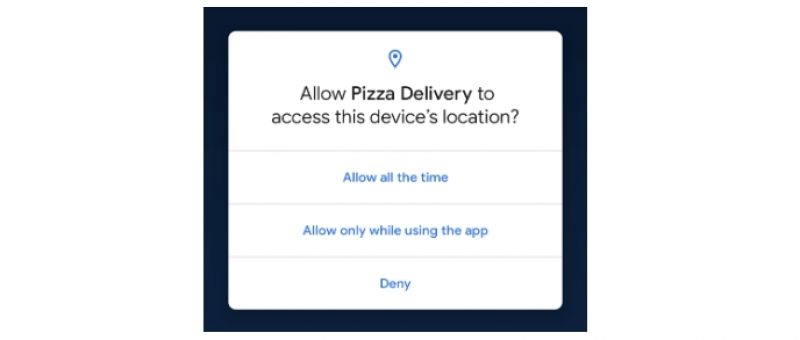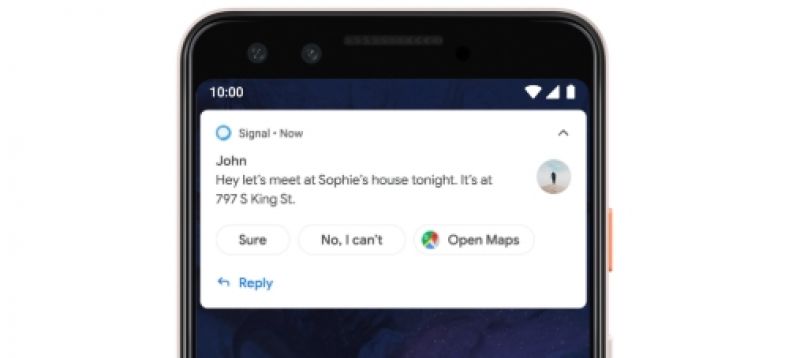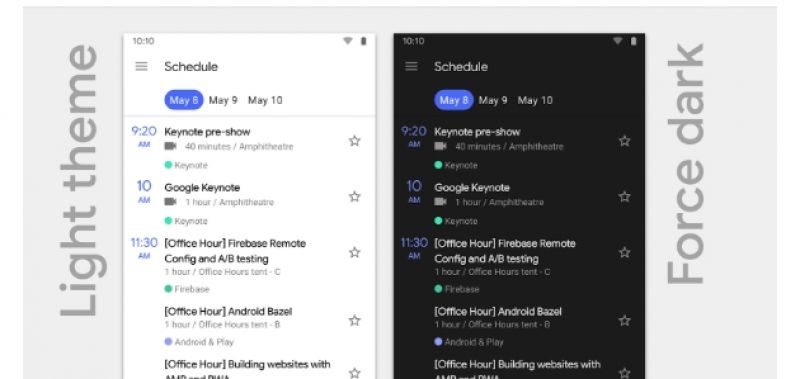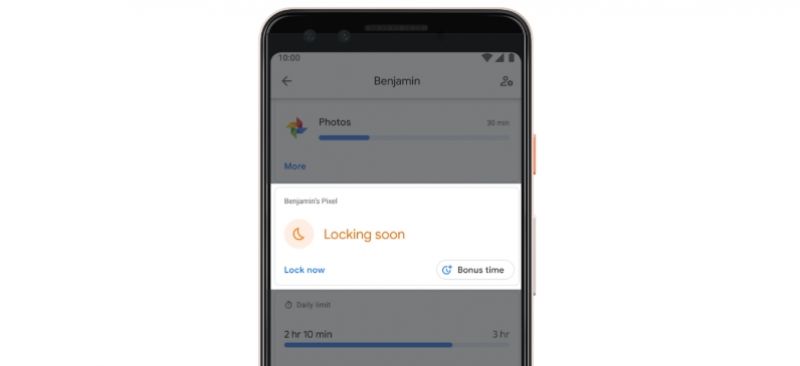Google I/O 2019: Here's how Android Q takes shape with Beta 3

With Google confirming that more than 2.5 billion devices running on the Android platform, the tech giant has now pushed the next version of the mobile operating system into Beta 3 mode, the Android Q.
Google says that with Android Q, they focused on three themes: innovation, security and privacy, and digital wellbeing. Google wants to help you take advantage of the latest new technology -- 5G, foldables, edge-to-edge screens, on-device AI, and more -- while making sure users' security, privacy, and wellbeing are always a top priority.
Google has confirmed that Android Q Beta 3 will be available on 15 partner devices from 12 OEMs, which include Huawei, Xiaomi, Nokia, Sony, Vivo, OPPO, OnePlus, ASUS, LGE, TECNO, Essential, and realme. And if you own a Pixel device, you too can avail of the beta OS today.
Let’s dive into some of the core elements of what Android Q will focus on.
Privacy and security
As Google talked about at Google I/O, privacy and security are important to the whole company and in Android Q they have added many more protections for users.
Privacy
In Android Q, privacy has been a central focus, from strengthening protections in the platform to designing new features with privacy in mind. It’s more important than ever to give users control -- and transparency -- over how information is collected and used by apps, and by Android phones.
Building on their work in previous releases, Android Q includes extensive changes across the platform to improve privacy and give users control -- from improved system UI to stricter permissions to restrictions on what data apps can use.

For example, Android Q gives users more control over when apps can get location. Apps still ask the user for permission, but now in Android Q the user has greater choice over when to allow access to location -- such as only while the app is in use, all the time, or never.
Outside of location, Google also introduced the Scoped Storage feature to give users control over files and prevent apps from accessing sensitive user or app data. User feedback has Google us refine this feature, and they have recently announced several changes to make it easier to support. These are now available in Beta 3.
Another important change is restricting app launches from the background, which prevents apps from unexpectedly jumping into the foreground and taking over focus. Beta 3 will see a transitioning from toast warnings to actually blocking these launches.
To prevent tracking Google is also limiting access to non-resettable device identifiers, including device IMEI, serial number, and similar identifiers. Google is also randomizing MAC address when your device is connected to different Wi-Fi networks and gating connectivity APIs behind the location permission.
Security
To keep users secure, Google has also extended their BiometricPrompt authentication framework to support biometrics at a system level. Thus extending a support for passive authentication methods such as face, and added implicit and explicit authentication flows. In the explicit flow, the user must explicitly confirm the transaction. The new implicit flow is designed for a lighter-weight alternative for transactions with passive authentication, and there’s no need for users to explicitly confirm.
Android Q also adds support for TLS 1.3, a major revision to the TLS standard that includes performance benefits and enhanced security. Google’s benchmarks indicate that secure connections can be established as much as 40% faster with TLS 1.3 compared to TLS 1.2. TLS 1.3 is enabled by default for all TLS connections made through Android’s TLS stack, called Conscrypt, regardless of target API level.
Project Mainline
Google also announced Project Mainline, a new approach to keeping Android users secure and their devices up-to-date with important code changes, direct from Google Play. With Project Mainline, Google is now able to update specific internal components within the OS itself, without requiring a full system update from your device manufacturer. This means Google can help keep the OS code on devices fresher, drive a new level of consistency, and bring the latest AOSP code to users faster -- and for a longer period of time.
Google plan to update Project Mainline modules in much the same way as app updates are delivered today -- downloading the latest versions from Google Play in the background and loading them the next time the phone starts up. The source code for the modules will continue to live in the Android Open Source Project, and updates will be fully open-sourced as they are released. Also, because they’re open source, they’ll include improvements and bug fixes contributed by many partners and developer community worldwide.
For users, the benefits are huge, since their devices will always be running the latest versions of the modules, including the latest updates for security, privacy, and consistency. For device makers, carriers, and enterprises, the benefits are also huge, since they can optimize and secure key parts of the OS without the cost of a full system update.
For app and game developers, Project Mainline will help drive consistency of platform implementation in key areas across devices, over time bringing greater uniformity that will reduce development and testing costs and help to make sure your apps work as expected. All devices running Android Q or later will be able to get Project Mainline.
Innovation and new experiences
Android is shaping the leading edge of innovation. With ecosystem partners, Google is enabling new experiences through a combination of hardware and software advances.
Foldables
This year, display technology will take a big leap with foldable devices coming to the Android ecosystem from several top device makers. When folded these devices work like a phone, then you unfold a beautiful tablet-sized screen.
Google has optimized Android Q to ensure that screen continuity is seamless in these transitions, and apps and games can pick up right where they left off. For multitasking, Google made some changes to onResume and onPause to support multi-resume and notify your app when it has focus. Also changed are how the resizeableActivity manifest attribute works, to help you manage how your app is displayed on large screens.
5G networks
5G networks are the next evolution of wireless technology -- providing consistently faster speeds and lower latency. For developers, 5G can unlock new kinds of experiences in your apps and supercharge existing ones.
Android Q adds platform support for 5G and extends existing APIs to help you transform your apps for 5G. You can use connectivity APIs to detect if the device has a high bandwidth connection and check whether the connection is metered. With these your apps and games can tailor rich, immersive experiences to users over 5G.
With Android’s open ecosystem and range of partners, Google expects the Android ecosystem to scale to support 5G quickly. This year, over a dozen Android device makers are launching 5G-ready devices, and more than 20 carriers will launch 5G networks around the world, with some already broad-scale.
Live Caption
On top of hardware innovation, Android’s AI is transforming the OS itself to make it smarter and easier to use, for a wider range of people. An example is Live Caption, a new feature in Android Q that automatically captions media playing on your phone.
Many people watch videos with captions on -- the captions help them keep up, even when on the go or in a crowded place. But for 466 million Deaf and Hard of Hearing people around the world, captions are more than a convenience -- they make content accessible. Google has worked with the Deaf community to develop Live Caption.
Live Caption brings real-time captions to media on your phone - videos, podcasts, and audio messages, across any app—even stuff you record yourself. Best of all, it doesn’t even require a network connection -- everything happens on the device, thanks to a breakthrough in speech recognition that we made earlier this year. The live speech models run right on the phone, and no audio stream ever leaves your device.
For developers, Live Caption expands the audience for your apps and games by making digital media more accessible with a single tap. Live Caption will be available later this year.
Suggested actions in notifications
In Android Pie Google introduced smart replies for notifications that let users engage with your apps direct from notifications. Now in Android Q Google wants to make smart replies available to all apps right now, without you needing to do anything. Starting in Beta 3, they are enabling system-provided smart replies and actions that are inserted directly into notifications by default.

Android Q suggestions are powered by an on-device ML service built into the platform -- the same service that backs our text classifier entity recognition service. It is built with user privacy in mind, and the ML processing happens completely on the device, not on a backend server.
Dark theme
Many users prefer apps that offer a UI with a dark theme they can switch to when light is low, to reduce eye strain and save battery. Users have also asked for a simple way to enable dark theme everywhere across their devices. Dark theme has been a popular request for a while, and in Android Q, it’s finally here.

Starting in Android Q Beta 3, users can activate a new system-wide dark theme by going to Settings > Display, using the new Quick Settings tile, or turning on Battery Saver. This changes the system UI to dark, and enables the dark theme of apps that support it. Apps can build their own dark themes, or they can opt-in to a new Force Dark feature that lets the OS create a dark version of their existing theme.
Gestural navigation
Many of the latest Android devices feature edge-to-edge screens, and users want to take advantage of every bit of them. Android Q introduces a new fully gestural navigation mode that eliminates the navigation bar area and allows apps and games to use the full screen to deliver their content. It retains the familiar Back, Home, and recents navigation through edge swipes rather than visible buttons.

Users can switch to gestures in Settings > System > Gestures. There are currently two gestures: Swiping up from the bottom of the screen takes the user to the Home screen, holding brings up Recents. Swiping from the screen’s left or right edge triggers the Back action.
Digital wellbeing
Digital wellbeing is another theme of work on Android – Google wants to give users the visibility and tools to find balance with the way they use their phones. Last year they launched Digital Wellbeing with Dashboards, App Timers, Flip to Shush, and Wind Down mode. These tools are really helping. App timers helped users stick to their goals over 90% of the time, and users of Wind Down had a 27% drop in nightly usage. This year it will expand the same features to help people find balance with digital devices, adding Focus Mode and Family Link.
Focus Mode
Focus Mode is designed for all those times you’re working or studying, and you want to focus to get something done. With focus mode, you can pick the apps that you think might distract you and silence them - for example, pausing email and the News while leaving maps and text message apps active.

You can then use Quick Tiles to turn on Focus Mode any time you want to focus. Under the covers, these apps will be paused - until you come out of Focus Mode! Focus Mode is coming to Android 9 Pie and Android Q devices later this year.
Family Link
Family Link is a new set of controls to help parents. Starting in Android Q, Family Link will be built right into the Settings on the device. When you set up a new device for your child, Family Link will help you connect it to you. You’ll be able to set daily screen time limits, see the apps where your child is spending time, review any new apps your child wants to install, and even set a device bedtime so your child can disconnect and get to sleep. And now in Android Q you can also set time limits on specific apps… as well as give your kids Bonus Time if you want them to have just 5 more minutes at bedtime. Family Link is coming to Android P and Q devices later this year.
Audio playback capture
Live Caption can take audio from any app and instantly turn it into on-screen captions. It’s a seamless experience that shows how powerful it can be for one app to share its audio stream with another. In Android Q, any app that plays audio can let other apps capture its audio stream using a new API. In addition to enabling captioning and subtitles, the API lets you support popular use-cases like live-streaming games, all without latency impact on the source app or game.
Now designed is a new capability with privacy and copyright protection in mind, so the ability for an app to capture another app's audio is constrained, giving apps full control over whether their audio streams can be captured.
Dynamic depth for photos
Apps can now request a Dynamic Depth image which consists of a JPEG, XMP metadata related to depth related elements, and a depth and confidence map embedded in the same file on devices that advertise support.

Requesting a JPEG + Dynamic Depth image makes it possible for you to offer specialized blurs and bokeh options in your app. You can even use the data to create 3D images or support AR photography use-cases. Dynamic Depth is an open format for the ecosystem -- the latest version of the spec is here.
New audio and video codecs
Android Q adds support for the open source video codec AV1, which allows media providers to stream high quality video content to Android devices using less bandwidth. In addition, Android Q supports audio encoding using Opus - a codec optimized for speech and music streaming, and HDR10+ for high dynamic range video on devices that support it. The MediaCodecInfo API introduces an easier way to determine the video rendering capabilities of an Android device. For any given codec, you can obtain a list of supported sizes and frame rates.
Vulkan 1.1 and ANGLE
Google is continuing to expand the impact of Vulkan on Android, their implementation of the low-overhead, cross-platform API for high-performance 3D graphics. Working together with device manufacturer partners, Google plans to make Vulkan 1.1 a requirement on all 64-bit devices running Android Q and higher, and a recommendation for all 32-bit devices. For game and graphics developers using OpenGL, Google is also working towards a standard, updateable OpenGL driver for all devices built on Vulkan. In Android Q there will be an experimental support for ANGLE on top of Vulkan on Android devices.
Thermal API
When devices get too warm, they may throttle the CPU and/or GPU, and this can affect apps and games in unexpected ways. Now in Android Q, apps and games can use a thermal API to monitor changes on the device and take action to help restore normal temperature. For example, streaming apps can reduce resolution/bit rate or network traffic, a camera app could disable flash or intensive image enhancement, or a game could reduce frame rate or polygon tesselation.
ART optimizations
Android Q introduces several improvements to the ART runtime to help apps start faster, consume less memory, and run smoother. To help with initial app startup, Google Play is now delivering cloud-based profiles along with APKs. These are anonymized, aggregate ART profiles that let ART pre-compile parts of your app even before its run. Cloud-based profiles benefit all apps and they're already available to devices running Android P and higher.
Google is also adding Generational Garbage Collection to ART's Concurrent Copying (CC) Garbage Collector. Generational CC collects young-generation objects separately, incurring much lower cost as compared to full-heap GC. It makes garbage collection more efficient in terms of time and CPU, reduces junk, and helps apps run better on lower-end devices.
So how do you as a user or app developer get Beta 3?
It's easy! Just enroll any Pixel device here to get the update over-the-air. If you're already enrolled, you'll receive the update soon, and, no action is needed on your part. Downloadable system images are also available.
You can also get Beta 3 on any of the other devices participating in the Android Q Beta program, from some of our top device maker partners. You can see the full list of supported partner and Pixel devices at android.com/beta. For each device you'll find specs and links to the manufacturer's dedicated site for downloads, support, and to report issues.
For even broader testing on supported devices, you can also get Android GSI images, and if you don’t have a device you can test on the Android Emulator -- just download the latest emulator system images via the SDK Manager in Android Studio.

